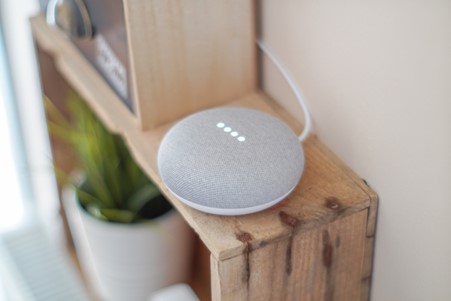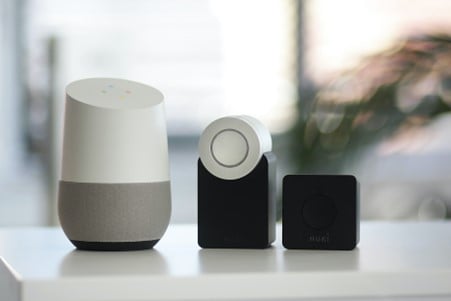How to Keep Your Smart Home from Turning Against You
Smart homes have become a ubiquitous part of modern living. It doesn’t even seem unusual anymore to tell your refrigerator to add milk to the digital...
3 min read
![]() Totalcare IT
:
Mar 13, 2024 2:36:00 PM
Totalcare IT
:
Mar 13, 2024 2:36:00 PM
The integration of smart home devices has become synonymous with modern living. They offer convenience, efficiency, and connectivity at our fingertips.
But a recent study has raised concerns about the darker side of these smart gadgets. It suggests that our beloved smart home devices may be spying on us.
It’s natural these days to invite these devices into your home. Yet there is also the need to scrutinize their privacy implications. We’ll shed some light on the potential surveillance risks posed by smart home devices as well as discuss ways to safeguard your privacy in an era of increasing connectivity.
Smart home devices can range from voice-activated assistants to connected cameras and thermostats. They have woven themselves seamlessly into the fabric of our daily lives.
These gadgets promise to make our homes smarter and more responsive to our needs. But a study by consumer advocate group Which? raises unsettling questions. What is the extent to which they may be eavesdropping on our most private moments?
The study examined the data practices of popular smart home devices. Including those by Google and Amazon. It revealed a landscape where the lines between convenience and surveillance blur.
The study scrutinized several popular smart home devices. Such as smart TVs, doorbell cameras, and thermostats. It uncovered several alarming revelations.
A significant number of smart home devices share user data with third-party entities. This data exchange is often unbeknownst to users. It raises concerns about the extent to which companies are sharing our personal data as well as doing so without explicit consent.
Voice-activated devices, like Alexa, are common. Smart speakers and assistants were found to be particularly susceptible to potential eavesdropping. The study revealed some eyebrow-raising information. There were instances where these devices recorded and transmitted unintentional audio data. This poses privacy risks especially for users who may unknowingly be under constant auditory surveillance.
One of the most disturbing aspects highlighted by the study is the lack of transparency. Data practices are often obscured under mountains of text.
Many smart home device manufacturers fail to provide clear and comprehensive information. Including details about how they collect, store, and share user data. This leaves consumers in the dark about potential privacy implications from connected homes. But what you don’t know can hurt you in this case.
The study also identified security vulnerabilities in certain smart home devices. This highlights the risk of unauthorized access to sensitive information. Inadequate security measures could potentially expose users to cyber threats as well as compromising the integrity of their smart home ecosystems.
Here are the key steps to navigate the smart home landscape safely.
Before purchasing a smart home device, carefully review the manufacturer’s privacy policy. Look for transparency about things like:
Take advantage of privacy settings offered by smart home devices. Many devices allow users to customize privacy preferences. These can include disabling certain data-sharing features as well as adjusting the sensitivity of voice-activated functionalities.
Ensure that your smart home devices have the latest firmware updates. Manufacturers often release updates to address security vulnerabilities as well as enhance device performance. Regular updates help fortify your devices against potential cyber threats.
Put in place strong, unique passwords for each smart home device. Avoid using default passwords. These are often easy targets for hackers. Strengthen your home network security to protect against unauthorized access.
Research whether you can achieve certain smart home functionalities with offline alternatives. If you can, opt for devices that operate offline or have limited connectivity. This can reduce the potential for data exposure.
If privacy is a top concern, consider limiting or disabling voice-activated features. This reduces the likelihood of inadvertent audio recordings and potential eavesdropping.
Periodically review the smart home devices connected to your network. Seeing just how many there are may surprise you. Remove any devices that are no longer in use. Or that lack adequate security measures. Keep a lean and secure smart home ecosystem to mitigate your risk
The connected era invites us to embrace technological advancements. But we need to do it responsibly. You don’t want the convenience of smart home devices to compromise your data privacy.
Just how secure is your smart home and Wi-Fi network? Need to find out? We can help.

Smart homes have become a ubiquitous part of modern living. It doesn’t even seem unusual anymore to tell your refrigerator to add milk to the digital...

In the age of smart living, our homes are becoming increasingly intelligent. They’re designed to cater to our every need. Smart gadgets are...

Smart home devices are becoming more popular and convenient. But they also pose some serious security risks. Hackers can target these devices to...